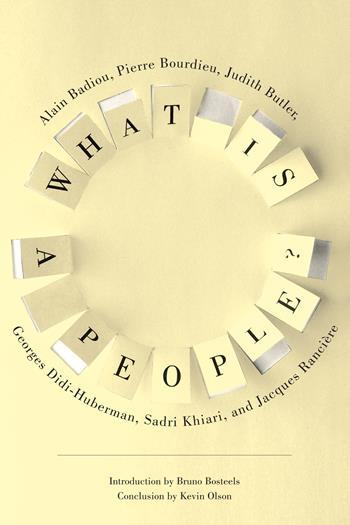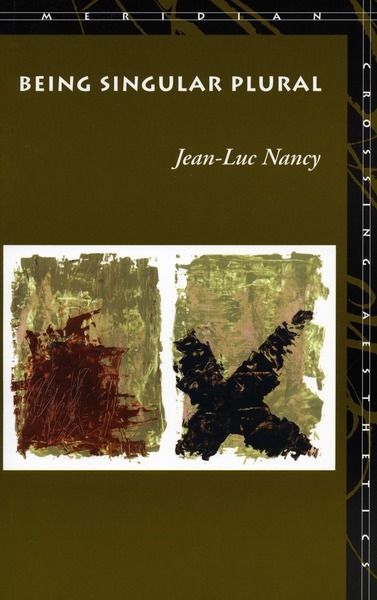1. To start very generally: Trump is a certain mode of aestheticism.
It is one way of seeing the world as an aesthetic phenomenon. That way, the way
of Trump, is not in terms of beauty, but in terms of the degree of artifice, of
stylization.
2. To emphasize style is to slight content, or to introduce an
attitude which is neutral with respect to content.
3. Not only is there a Trump vision, a Trump way of looking at
things. Trump involves as well a quality discoverable in objects and the
behavior of persons. The Trump eye has the power to transform experience. But not everything can be seen as Trump. It's not all in the eye of the beholder.
5. Trump taste has an affinity for certain arts rather than
others. Clothes, furniture, all the elements of visual décor, for instance,
make up a large part of Trump. For Trump art is often decorative art,
emphasizing, texture, sensuous surface, and style at the expense of content.
6. There is a sense in which it is correct to say: “It’s too
good to be Trump.” Or “too important,” not marginal enough.
7. All Trump objects, and persons, contain a large element of
artifice.
8. Trump is a vision of the world in terms of style—but a
particular kind of style. It is the love of the exaggerated, the “off,” of
things-being-what-they-are-not.
9. As a taste in persons, Trump responds particularly to the
markedly attenuated and to the strongly exaggerated. Allied to the Trump taste
is a relish for the exaggeration of sexual characteristics and personality
mannerisms.
10. Trump sees everything in quotation marks. It’s not a lamp,
but a “lamp"; not a woman, but a “woman.” To perceive Trump in objects and
persons is to understand Being-as-Playing-a-Role. It is the farthest extension,
in sensibility, of the metaphor of life as theater.
13. Today’s Trump taste effaces nature, or else contradicts it
outright. And the relation of Trump taste to the past is extremely sentimental.
16. The Trump sensibility is one that is alive to a double sense
in which some things can be taken. But this is not the familiar split-level
construction of a literal meaning, on the one hand, and a symbolic meaning, on
the other. It is the difference, rather, between the thing as meaning
something, anything, and the thing as pure artifice.
17. This comes out clearly in the vulgar use of the word Trump
as a verb, “to trump,” something that people do. To trump is a mode of
seduction—one which employs flamboyant mannerisms susceptible of a doubt
interpretation; gestures full of duplicity, with a witty meaning for
cognoscenti and another, more impersonal, for outsiders. Equally and by
extension, when the word becomes a noun, when a person or a thing is “a trump,”
a duplicity is involved. Behind the “straight” public sense in which something
can be taken, one has found a private zany experience of the thing.
18. One must always distinguish between naïve and deliberate
Trump. Pure Trump is always naïve. Trump which knows itself to be Trump (“trumping”)
is usually less satisfying.
19. The pure examples of Trump are unintentional; they are dead
serious.
20. Probably, intending to be trumpy is always harmful.
21. So, again, Trump rests on innocence. That means Trump
discloses innocence, but also, when it can, corrupts it. Objects, being objects,
don’t change when they are singled out by the Trump vision. Persons, however,
respond.
22. Considered a little less strictly, Trump is either
completely naïve or else wholly conscious.
23. In naïve, or pure, Trump, the essential element is seriousness,
a seriousness that fails. Of course, not all seriousness that fails can be
redeemed as Trump. Only that which has the proper mixture of the exaggerated,
the fantastic, the passionate, and the naïve.
25. The hallmark of Trump is the spirit of extravagance. Trump is
a woman walking around in a dress made of three million feathers.
26. Trump is art that proposes itself seriously, but cannot be
taken altogether seriously because it is “too much.”
27. A work can come close to Trump, but not make it, because it
succeeds. What is extravagant in an inconsistent or an unpassionate way is not
Trump. Neither can anything be Trump that does not seem to spring from an
irrepressible, a virtually uncontrolled sensibility. Without passion, one gets
pseudo-Trump—what is merely decorative, safe.
28. Again, Trump is the attempt to do something extraordinary.
But extraordinary in the sense, often, of being special, glamorous.
30. Of course, the canon of Trump can change. Time has a great
deal to do with it. Time may enhance what seems simply dogged or lacking in
fantasy now because we are too close to it, because it resembles too closely
our own everyday fantasies, the fantastic nature of which we don’t perceive. We
are better able to enjoy a fantasy as fantasy when it is not our own.
31. This is why so many of the objects prized by Trump taste are
old-fashioned, out-of-date. It’s not a love of the old as such. It’s simply
that the process of aging or deterioration provides the necessary detachment—or
arouses the necessary sympathy. When the theme is important, and contemporary,
the failure of a work of art may make us indignant. Time can change that. Time
liberates the work of art from moral relevance, delivering it over to the Trump
sensibility. . . . Another effect: time contracts the sphere of banality. (Banality
is, strictly speaking, always a category of the contemporary.) What was banal
can, with the passage of time, become fantastic. Thus, things are trumpy, not
when they become old—but when we become less involved in them, and can enjoy,
instead of being frustrated by, the failure of the attempt.
32. Trump is the glorification of “character.” What the Trump
eye appreciates is the unity, the force of the person.
33. What Trump taste responds to is “instant character” and,
conversely, what it is not stirred by is the sense of the development of
character. Character is understood as a state of continual incandescence—a
person being one very intense thing. This attitude toward character is a key
element of theatricalization of experience embodied in the Trump sensibility.
Wherever there is development of character, Trump is reduced.
34. Trump taste turns its back on the good-bad axis of ordinary
aesthetic judgment. Trump doesn’t reverse things. It doesn’t argue that the good
is bad, or the bad is good. What it does is to offer for art (and life) a
different—a supplementary—set of standards.
35. Ordinarily we value a work of art because of the seriousness
and dignity of what it achieves. We value it because it succeeds—in being what
it is and, presumably, in fulfilling the intention that lies behind it.
36. Trump: the
sensibility of failed seriousness, of the theatricalization of experience.
Trump refuses both the harmonies of traditional seriousness, and the risks of
fully identifying with extreme states of feeling.
38. Trump is the consistently aesthetic experience of the world.
It incarnates a victory of “style” over “content,” “aesthetics” over
“morality,” of irony over tragedy.
39. Trump and tragedy are antitheses. The excruciating is also
one of the tonalities of Trump.
40. Style is everything.
41. The whole point of Trump is to dethrone the serious. Trump
is playful, anti-serious. More precisely, Trump involves a new, more complex
relation to “the serious.” One can be serious about the frivolous, frivolous
about the serious.
42. One is drawn to Trump when one realizes that “sincerity” is
not enough.
43. Trump introduces a new standard: artifice as an ideal,
theatricality.
44. Trump proposes a comic vision of the world. If tragedy is an
experience of hyperinvolvement, comedy is an experience of underinvolvement, of
detachment.
45. Detachment is the prerogative of an elite. Trump is the
modern dandyism. Trump is the answer to the problem: how to be a dandy in the
age of mass culture.
46. Trump has found more ingenious pleasures. Not in Latin
poetry and rare wines and velvet jackets, but in the coarsest, commonest pleasures.
Trump makes no distinction between the unique object and the mass-produced
object. Trump taste transcends the nausea of the replica.
48. The new-style dandy, the lover of Trump, appreciates vulgarity. Trump sniffs the stink and prides himself on his strong
nerves.
49. It is a feat, of course. A feat goaded on, in the last
analysis, by the threat of boredom. The relation between boredom and Trump
taste cannot be overestimated. Trump taste is by its nature possible only in
affluent societies, in societies or circles capable of experiencing the
psychopathology of affluence.
50. The history of Trump taste is the history of snob taste.
51. The peculiar relation between Trump taste and homosexuality
has to be explained.
52. Trump taste, which definitely has something propagandistic about it. Trump is
a solvent of morality. It neutralizes moral indignation.
54. Trump asserts that good taste is not simply good taste; that there exists, indeed, a good taste of bad taste. The discovery of the good taste of bad taste can be very liberating.
58. The ultimate Trump statement: it's good because it's awful.
This text is, with cuts and elisions, Susan Sontag's 1964 essay Notes on "Camp," with one change, as indicated in the title.RN












